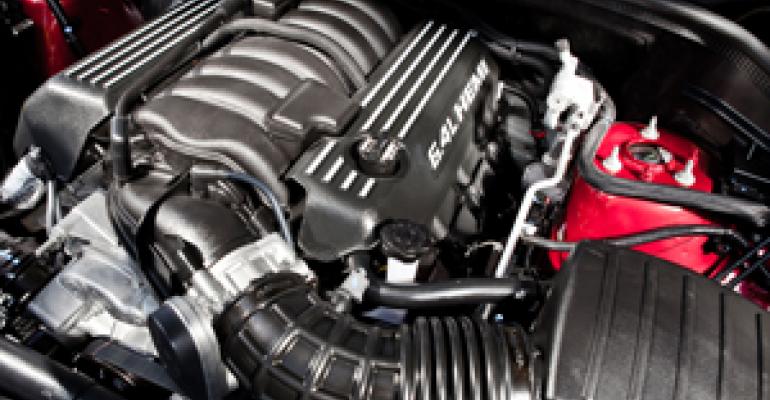
WEST HOLLYWOOD, CA – Chrysler officials maintain buyers of SRT vehicles are not concerned about fuel economy. But the auto maker addresses the issue by adding its latest fuel-saver technology to the performance lineup.
For the ’12 model year, SRT8 versions of the Chrysler 300, Dodge Challenger and Charger and Jeep Grand Cherokee come fitted with a version of the fuel-saver technology that shuts down half the cylinders in their 470-hp 6.4L V-8 Hemi engine more often than earlier renditions of the deactivation system.
“It will be going into 4-cyl. mode more often because the engine is so big,” Ralph Gilles, president and CEO of SRT (Street and Racing Technologies), tells Ward’s at a media event here.
“On the freeway, if you set cruise control at 70 mph (113 km/h), you’ll be in 4-cyl. mode indefinitely, even up hills. It’s that good now,” he says.
Chrysler has yet to reveal fuel-economy ratings for all its ’12 SRT models, with the exception of the Grand Cherokee SRT8, which it says will achieve 12/18 mpg (19.6-13.0 L/100 km) city/highway, a 13% improvement over the ’10 model with a 6.1L Hemi V-8.
The auto maker did not make ’11 SRT versions of the Grand Cherokee, Charger or 300, so the ’12 model year represents the first time cylinder deactivation is being offered on the high-performance versions of those vehicles.
Fuel economy on the ’12 Charger and 300 SRT8s is expected to increase up to 25% on the highway over the ’10 models, which were rated at 19 mpg (12.3 L/100 km) in highway driving.
The ’11 Challenger’s 14/22 mpg (16.8-10.7 L/100 km) city/highway rating, when equipped with an automatic transmission, remains unchanged for the ’12 model year, the auto maker says.

A light on the instrument panel indicates when the vehicle enters fuel-saving mode.
Joe Grace, vehicle line executive-A/B segment and SRT, says cylinder deactivation is the best fuel-saving system for the current performance lineup, but doesn’t rule out other technologies for the future.
Chrysler also is looking at turbocharged, direct-injected engines, a technology that has gained popularity in the industry for its ability to provide fuel-economy improvements without sacrificing performance, he says.
“We’re moving in those types of directions, but we’re trying to balance (fuel-economy needs) with what we have now,” Grace tells Ward’s. “We really have a truly outstanding powertrain with low-end torque and high-end power, and it’s really a good match for these cars.”
Future SRT models also could get a version of the MultiAir valve-control system, a technology offered by alliance-partner Fiat.
Fiat says MultiAir delivers a 10% boost in power, 15% increase in low-end torque and up to 10% improvement in fuel economy for both normally aspirated and turbocharged engines.
“We’re looking at other applications for MultiAir,” Grace says. “If the consensus down the road is that is a better technology, we’ll gravitate in that direction.”
With half the cylinders not firing at any given time, Chrysler engineers had to devise a way to maintain the throaty exhaust characteristics of the 6.4L Hemi, an attribute enthusiasts covet, Gilles says.
The solution was a technology new to Chrysler: an active-valve exhaust system. The system “took a long time to develop because it’s very hard to give the car a beautiful exhaust note and hide the sound of the 4-cyls.,” Gilles says. “It’s the hardest thing in the world.”
Snags in developing the system were the reason fuel-saver technology was not offered on previous SRT vehicles, he says.
Unlike some active-exhaust systems that increase the noise level, Chrysler says its setup does the opposite. The system is designed to increase the window of operation for the fuel-saver technology by incorporating a pressure-activated valve in the exhaust system.
The valve provides “acceptable” exhaust noise levels when in 4-cyl. mode, while also retaining the characteristic V-8 exhaust note at high engine speeds, the auto maker says.
The active-valve exhaust system is “a big part of the car,” Gilles says. Otherwise, the vehicles would have been “church quiet (in 4-cyl. mode) and would not have made sense for SRT.”





